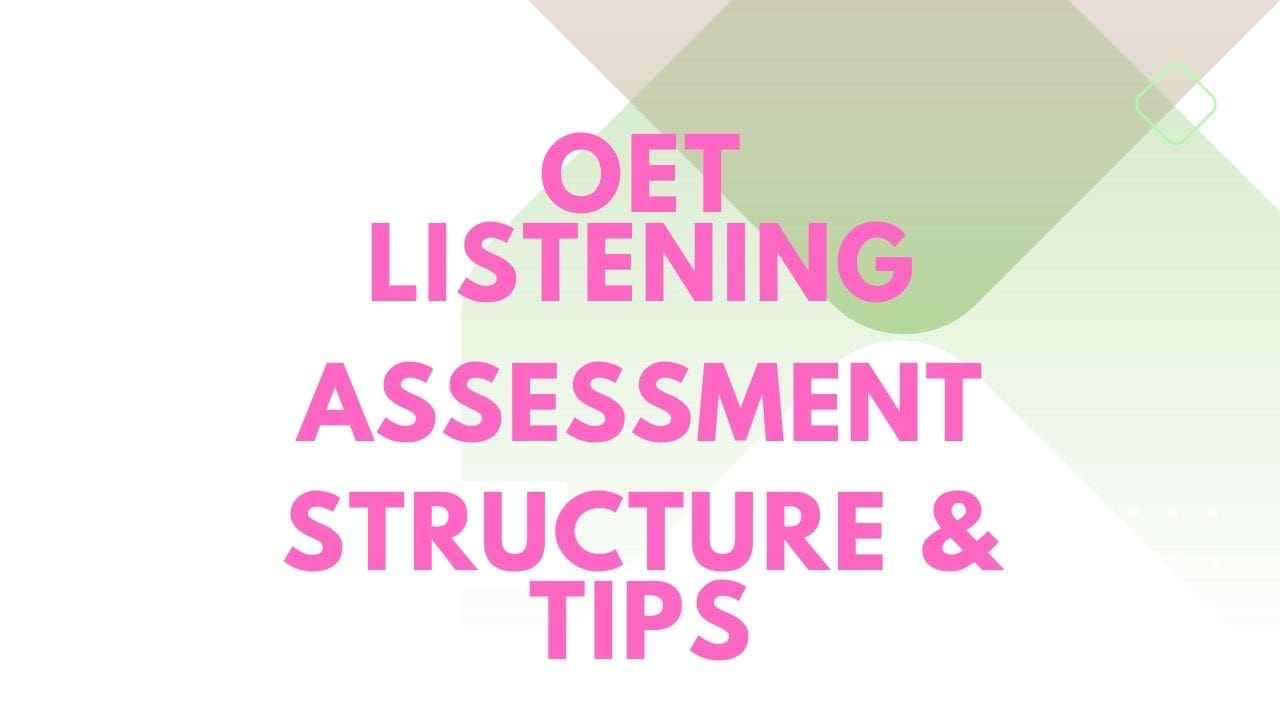OET Listening – Assessment Structure & Tips
OET Assessment Structure & Tips
Test Overview
OET is the international English language test that assesses the language communication skills of healthcare professionals who seek to register and practise in an English-speaking environment.
Assessment structure
The OET assesses proficiency in all four language skills, including listening, reading, writing, and speaking, with a particular focus on effective communication within the healthcare field. In this blog, we are looking at a Listening Sub Set
In regards to the Listening sub-test
- It lasts around 40 minutes and comprises three sections with a total of 42 questions. The topics covered are generally related to healthcare and are relevant to candidates of all professions. During the test, each recording is played only once, and you are expected to answer the questions while listening.
Part A – consultation extracts (about 5 minutes each)
Part A is to evaluate your ability to identify specific information during a consultation. The test includes two recordings of consultations between healthcare professionals and patients. Your task is to fill in the notes of the healthcare professional based on the information you hear during the recordings. It is important to note that the healthcare professionals featured in the recordings may belong to any of the 12 professions eligible to take the OET.
Part B – short workplace extracts (about 1 minute each)
Part B of the test is designed to evaluate your capability in identifying specific details, main ideas, opinions, or objectives presented in short excerpts from healthcare workplaces. Consequently, the test consists of six recordings of various healthcare-related exchanges, such as team briefings, handovers, or dialogues between healthcare professionals and patients. After listening to each extract, you will need to answer a multiple-choice question about it.
Part C – presentation extracts (about 5 minutes each)
Part C assesses your ability to follow a recorded presentation or interview on a range of accessible healthcare topics. Therefore, you will listen to two different extracts and you will answer six multiple-choice questions for each extract. Consequently, you may expect two presentations or two interviews, or one of each.
How is listening ability assessed in OET?
The OET Listening sub-test is designed to assess a range of listening skills, such as identifying specific information, detail, gist, opinion or the speaker’s purpose. These skills are assessed through note-completion tasks and multiple-choice questions.
Your answers for OET Listening Part A are double-marked by qualified and highly trained OET assessors. Your responses are assessed against an established marking guide. During the marking session, problematic or unforeseen answers are referred to a sub-group of senior assessors for guidance and all papers are double-marked to ensure fairness and consistency.
Your answers for Part B and Part Care computer scanned and automatically scored.
To perform well on the OET listening sub-test, it is essential to develop good listening skills.
OET Listening – Assessment Structure & Tips
Tips that can help you to improve your performance on the listening sub-test:
Practice active listening:
Active listening means paying close attention to what the speaker is saying and making an effort to understand the message. To practice active listening, focus on the speaker’s words, tone, and body language, and avoid distractions.
Familiarize yourself with different accents:
The OET listening sub-test features audio recordings with different accents, including British, American, and Australian. Therefore, to improve your ability to understand different accents, listen to a range of English-language media, such as podcasts, TV shows, and movies.
Learn healthcare-related vocabulary:
The OET listening sub-test features healthcare-related vocabulary, such as medical terminology and healthcare procedures. Therefore, it is essential to develop a good understanding of these terms to understand the audio recordings and answer the questions correctly.
Practice with past papers:
The best way to prepare for the OET listening sub-test is to practice with past papers. This will give you an idea of the format of the test, the types of questions asked, and the level of difficulty.
CONCLUSION
The OEt listening sub-set is an essential part of the OET exam, and it requires practice, patience, and dedication to perform well. By following the tips mentioned above and practising regularly, you can improve your listening skills and achieve a score on the OET listening sub-test.
For more resources check out our youtube @hzadeducation-coachingcent986
Check out
| 15-hour All-Inclusive PTE Course! |

